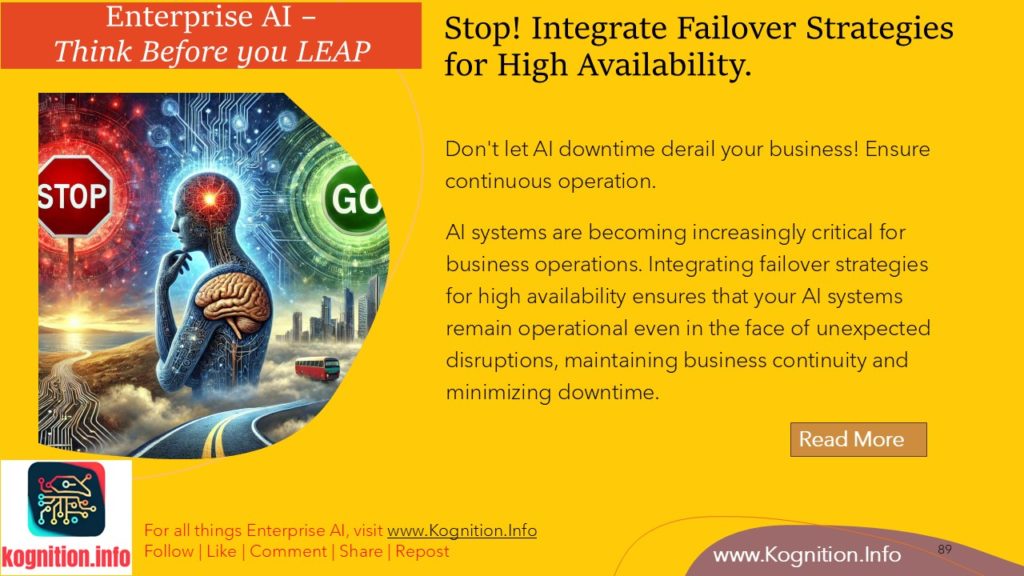
Stop! Integrate Failover Strategies for High Availability.
Don’t let AI downtime derail your business! Ensure continuous operation.
AI systems are becoming increasingly critical for business operations. Integrating failover strategies for high availability ensures that your AI systems remain operational even in the face of unexpected disruptions, maintaining business continuity and minimizing downtime.
- Redundancy: Build redundancy into your AI infrastructure. This may involve using multiple servers, databases, or cloud regions to ensure that if one component fails, another can take over seamlessly.
- Failover Mechanisms: Implement automatic failover mechanisms that detect failures and redirect traffic to backup systems. This minimizes downtime and ensures continuous operation of your AI applications.
- Disaster Recovery: Develop a comprehensive disaster recovery plan that outlines procedures for restoring AI systems in case of major disruptions, such as natural disasters or cyberattacks.
- Monitoring and Alerting: Monitor your AI systems for potential issues and configure alerts to notify you of any failures or performance degradation. This allows you to take proactive measures to prevent downtime.
- Testing and Simulation: Regularly test your failover strategies and disaster recovery plans to ensure they are effective and can handle various failure scenarios.
Remember! High availability is crucial for critical AI systems. Integrating failover strategies ensures that your AI applications remain operational, minimizing downtime and maintaining business continuity.
What’s Next: Evaluate your AI infrastructure and identify potential single points of failure. Implement redundancy, failover mechanisms, and disaster recovery plans to ensure high availability and minimize the impact of disruptions.
For all things, please visit Kognition.info – Enterprise AI – Stop and Go.
